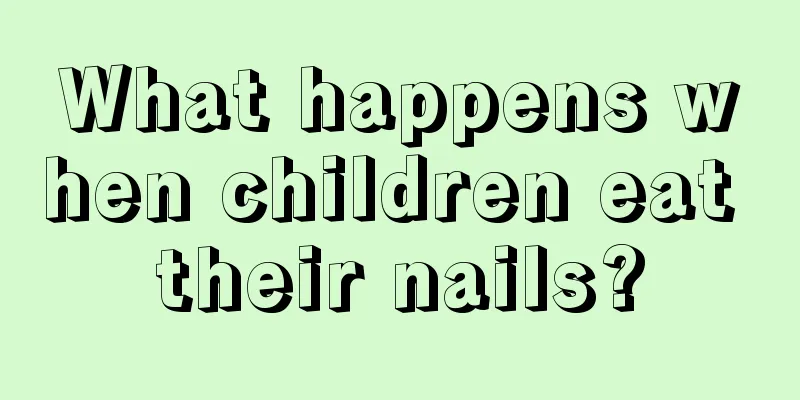Sores on the child's buttocks

|
The most common condition for children's buttocks to develop sores is perianal abscess, the cause of which is closely related to bacterial infection and improper care. After the disease occurs, the child's buttocks will have lumps, redness, swelling and fever, especially when the child has a bowel movement, there will be severe pain. Regarding the phenomenon of children's buttocks getting sores, we need to have a comprehensive understanding of the symptoms of perianal abscesses. Only after confirming that it is this disease can we better solve it. Your baby may experience rectal irritation due to difficulty in defecation and urination. This is followed by systemic poisoning symptoms such as general discomfort, mental fatigue, increased body temperature, loss of appetite, chills and high fever. Generally, an abscess will form in about a week. A soft, tender, fluctuating mass can be felt around the anus or in the rectum during digital examination. Pus can be extracted by puncturing with a syringe. If the wound ruptures on its own or is incised and drained, the pain will be relieved or disappear, the body temperature will drop, and the general condition will improve. However, the pus-filled wound is not easy to heal or pus-filled wound will recur after temporary healing. If it does not heal for a long time, it will become anal fistula. Symptoms vary depending on where the abscess occurs. 1. Perianal subcutaneous abscess: The main symptom is pain, which is initially distending pain, throbbing pain when purulent, and pain aggravated by defecation. Urinary retention may occur when the abscess is in front of the anus, and pain in the coccyx may occur when the abscess is behind the anus. Symptoms of systemic poisoning are mild, with local swelling, redness, tenderness, and fluctuation. 2. Retrorectal abscess: The systemic symptoms are similar to those of pelvic rectal fossa abscess, but the local symptoms are mainly soreness, swelling and heaviness in the coccyx and lumbar region, radiating to the back and thighs on both sides. There is tenderness in the coccyx and the child cannot sit upright. 3. Rectal submucosal abscess: The child feels generally unwell, tired, and has fever. The main local symptom is rectal irritation, including tenesmus, heaviness in the abdomen, frequent bowel movements or a feeling of urge to defecate. Tuberculous anorectal abscess is different from the above-mentioned bacterial infection. Children often suffer from chronic diseases. The abscess may take weeks or months to form. The local pain is not severe and is accompanied by low fever. The local redness and swelling are not obvious. The pus flowing out after rupture is clear and milky white. The pus opening is sunken, and the surrounding skin is blue or bluish-white. There are often multiple external openings for pus to flow, and it does not heal for a long time. A systemic examination can reveal tuberculosis lesions in the lungs, large intestine, or other parts of the body, and pus culture can find Mycobacterium tuberculosis. 4. Ischiorectal abscess: The child has symptoms of systemic poisoning such as general discomfort, fever, chills, and increased body temperature. Local symptoms include swelling, redness, burning pain, throbbing pain, tenderness, restlessness on one side of the anus; the pain worsens during activity and defecation; and urination is difficult. 5. Pelvic rectal abscess: The child has severe systemic symptoms, first with chills, high fever, and general fatigue. In severe cases, there may be symptoms of sepsis and poisoning. The local symptoms are mild, with only a feeling of rectal prolapse, soreness or discomfort, and difficulty urinating may also occur. Once parents find that their baby has difficulty defecating and has lumps or even pustules in the perianal area, they must be alert to whether the child has perianal abscess. It is best to take the child to the hospital for examination immediately to confirm the condition. |
<<: The last injection of the five-link combination had a strong reaction
>>: What happens when children talk in their sleep?
Recommend
Symptoms of runny nose in babies
A baby's runny nose means that the baby is si...
What to do if your child drools severely
When babies are very young, parents will put a ha...
How long after birth can a baby swim?
Nowadays, technology is becoming more and more ad...
What causes shortness of breath in children?
Shortness of breath is a common symptom among man...
How much water should a newborn baby be fed?
?In addition to milk, newborns also need to drink...
Does my child need to be checked if he coughs up blood in the sputum in the morning?
We all know that children have small constitution...
What should I do if my 3-year-old child drools?
When the baby is four months old, as a family mem...
What should babies eat if they have diarrhea?
Diarrhea is the most common gastrointestinal dise...
What is the appropriate water temperature for children's bath?
It is said that children are the apple of their p...
What should we pay attention to in children’s vision development?
Nowadays, many children are nearsighted at a very...
What should I do if my child has tracheitis and phlegm?
When it comes to children's bronchitis, mothe...
How to treat cataracts in children?
Nowadays, many children in society suffer from ca...
When do boys finish replacing their teeth?
Tooth replacement is a stage that everyone needs ...
What to do if your child has toothache
When children have toothache, it is usually cause...
Ten major misunderstandings about children's nutritional supplements
Children's health is naturally inseparable fr...









